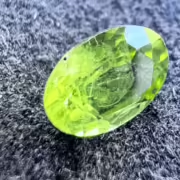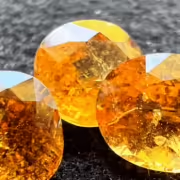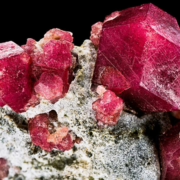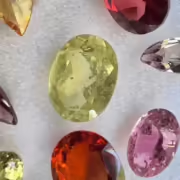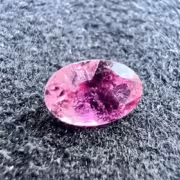Hyacinthe – properties, virtues & benefits
Hyacinth Stone, a natural jewel with violet-blue reflections, is a semi-precious stone sought after for its beauty and soothing energy. Discover its virtues and applications in lithotherapy.
HYACINTHE CHARACTERISTICS
- Chakra: Throat.
- Properties: Soothing, Communication, Balance.
- Astrology: JuPiter.
- Zodiac: Taurus, Libra.
- Elements: Water, Air.
- Colors: Blue-violet.
- Hardness: 7-7.5 (Mohs scale).
- Chemical Formula: Al2SiO4(F,OH)2.
- Associated god: Apollo.
HYACINTHE – HIS HISTORY
In his 1956 dictionnaire portatif de la langue française, Pierre Richelet gives the meaning of “Hiacinte” as a flower and gemstone name. Over the centuries, the definition of this term has evolved. In the 17th century, there were four species of “Hiacinte”: fire-red, orange-red, saffron-yellow and colorless. In the 18th century, Romé de l’Isle described Hiacinte as a mineral whose crystals are quadrilateral prisms. In the 19th century, the term was applied to zircon, then to hessonite and certain types of quartz from the 20th century onwards. Today, Hyacinth stone is described as the old name for Hyacinth, a fine orange-brown to red stone. During the Renaissance, Hyacinth was considered to bring wisdom, prudence and virtues of the heart. It was also considered a good-luck stone for wealth and honor. The Larousse today describes Hyacinth as an orange-brown to red zircon. The name has insPired many poets, including Henri Bosco, who wrote two books devoted to the adventures of Constantine and Hyacinth, reflecting his interest in this particular color.
HYACINTHE STONE – ITS ORIGIN AND COMPOSITION
Hyacinth stone is similar to zircon in terms of physical and chemical properties. Its name comes from its orange-red color, sometimes golden brown or golden yellow. Its luster can vary from adamantine to bold, its luminescence is low and its density is between 3.95 and 4.2. It is considered a fine stone and was worn as a talisman to relieve pain and protect against poison. Although usually small in size, the Smithsonian Institution in Washington, D.C., preserves large cut crystals from various parts of the world, including Sri Lanka, Burma and Thailand. Hyacinth stone is often found in Southeast Asia, particularly Thailand, Cambodia and sometimes Vietnam, but stones from the gem placers of Sri Lanka are unique for their shimmering colors. Red varieties are found in the French Alps, the Urals and Madagascar, while yellow varieties are found in Australia, at Alice Springs.

HYACINTHE STONE – VERTIES AND PROPERTIES
HYACINTHE ON THE PSYCHOLOGICAL LEVEL
The stone in question is known to be a powerful source of energy, but it is not recommended for angry, stressed or hypertensive people. It transmits enthusiasm and strength to help cope with the difficulties of everyday life. Although its forces are deep and powerful, they remain contained within, encouraging us to surpass ourselves. The stone brings courage, cheerfulness and enthusiasm to give strength to move forward and face life’s trials. It humbly brings good fortune to benevolent people.
PHYSICAL HYACINTHE
For many centuries, Hyacinth stone has been recognized for its curative and mystical virtues. It was used to bridge energy leaks or alleviate any kind of blockage. Its powerful energies boost the immune system and help the body fight viruses and parasites. Hyacinth elixir relieves intestinal problems by calming and harmonizing the subconscious with the world. It is particularly effective in soothing heavy symptoms and accentuating the positive effects of prescribed medical treatment, by reducing the proliferation of dysfunctional cells. It also relieves side effects such as fatigue, nausea and abdominal pain. Athletes can also rely on Hyacinth stone to regulate their heart rate and strengthen their heart muscle, thus reducing the risk of heart-related health problems. This stone can act on different parts of the body as required, such as the heart (lungs), solar plexus (stomach, liver, kidneys), sex (prostate, testicles) or throat (tongue, thyroid) chakras.

HYACINTHE STONE – CLEAN AND RECHARGE
To clean and recharge the Hyacinth Stone, follow these simple steps:
- Cleaning:
- Water: Place the stone under cold running water for a few minutes to eliminate accumulated negative energies.
- Fumigation: use white sage or Palo Santo wood to purify the stone through smoke.
- Reloading:
- Sunlight: Expose the Hyacinth Stone to sunlight for 2 to 3 hours to recharge. Avoid prolonged exposure to preserve the stone’s color.
- Lunar light: Place the stone under the light of the full moon for an entire night for gentle, effective recharging.
After these steps, your Hyacinth Stone will be cleaned and recharged, ready to be used again to take full advantage of its properties.
WHERE DOES THE NAME HYACINTHE COME FROM?
The name “hyacinth” has its origins in Greek mythology. It takes its name from Hyacinthus, a handsome young man loved by both the god Apollo and the wind god Zephyr. According to the myth, one day while Apollo and Hyacinthus were playing discus, Zephyr, jealous of their relationship, deflected the trajectory of the discus thrown by Apollo, fatally striking Hyacinthus in the head.
.
Grief-stricken, Apollo transformed Hyacinthus’ blood into a flower to honor his memory. The flower was named hyacinth. Subsequently, the term “hyacinth” was used to designate blue-violet colored precious and semi-precious stones, recalling the color of the original flower and symbolizing the beauty and emotion surrounding the Hyacinthus myth.
WHICH CHAKRA DOES HYACINTUS ACT ON?
Hyacinth acts primarily on the throat chakra, also known as Vishuddha in Sanskrit. This chakra is associated with communication, self-expression and truth. By working on the throat chakra, hyacinth stone promotes better communication, boosts self-confidence and helps to express thoughts and emotions clearly and authentically.
WHICH ASTROLOGICAL SIGN IS ASSOCIATED WITH HYACINTHE?
Hyacinth is primarily associated with the astrological signs of Taurus and Libra. These signs have a natural affinity with the soothing, balancing properties of hyacinth stone. It helps Taureans find emotional stability and Librans balance their energy and ability to communicate. However, it’s important to note that stones can be beneficial for all astrological signs depending on individual needs and intentions.
SUMMARY OF THE HYACINTHE STONE
Hyacinth stone in lithotherapy refers to hyacinth zirconia, a semi-precious stone whose color varies from orange-yellow to red-brown. In lithotherapy, this stone is attributed with energetic properties and an impact on emotional and sPiritual health. Here’s a summary of the properties and uses of hyacinth stone in lithotherapy:
- Emotional balancing: Hyacinth stone is considered a calming stone, helPing to reduce stress, anxiety and anger. It promotes emotional balance and mental clarity.
- Stimulating creativity: hyacinth zirconia is said to stimulate imagination and creativity, helPing individuals find innovative solutions and overcome challenges.
- Self-confidence: Hyacinth stone is also associated with self-confidence and self-esteem, encouraging people to believe in their abilities and assert themselves.
- Positive energies: hyacinth zirconia is known to attract positive energies and ward off negative ones, bringing a sense of well-being and inner peace.
- Chakra harmonization: In lithotherapy, hyacinth stone is often used to balance and harmonize the sacral chakra (Svadhisthana), which is associated with creativity, sexuality and procreation.
It’s important to note that lithotherapy is an alternative practice and the virtues attributed to stones are not scientifically proven. Stones should not be used as a substitute for proper medical treatment, but rather as a complement to traditional care.

